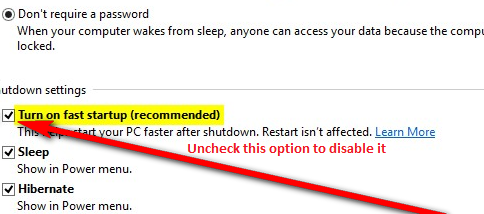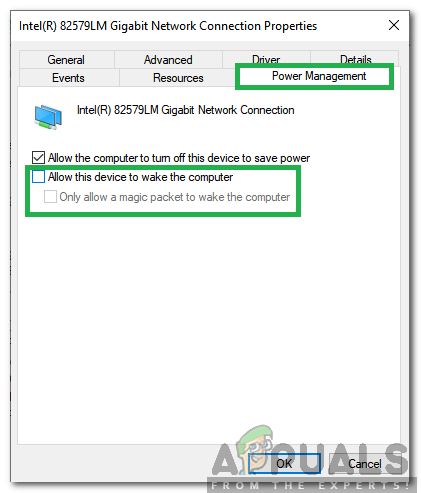In such cases, your computer will restart 5-10 seconds after it powers down regardless of whether you turn it off by clicking on the Shut down button or by ordering the computer to shut down using a Command Prompt. In addition, putting your computer to sleep by clicking on the Sleep button also results in it waking up after 5-10 seconds. Even if your computer goes into Sleep mode if it is left idle, its screen will turn back on in a couple of minutes. The only way for Windows 10 users suffering from this problem to actually turn their computers off is to unplug them from their power supplies, remove their batteries (for laptops) or hold down their power buttons for 3-10 seconds (for desktop computers). The cause of this issue has now been revealed as the fast startup feature that Microsoft has introduced with Windows 10 – a feature that is actually meant to allow Windows 10 computers to boot up faster when they are coming out of a shutdown. The following are the two solutions that have proven to be highly effective against this issue:
Solution 1: Disable fast startup in Power Options
For almost 85% of the people who have been affected by this restart instead of shutdown issue, disabling fast startup in Power Options took care of the problem. To disable fast startup in Power Options, you need to: Open Control Panel. Switch to Icons View. Click on Power Options. Click on Choose what the power buttons do in the left pane.
In the System Settings dialog, click on the blue colored Change settings that are currently unavailable option.
Confirm the action if prompted to do so by UAC. In the Shutdown settings section, uncheck the checkbox beside the Turn on fast startup (recommended) Click on save changes. This will disable fast startup on your computer, and the next time you shut your computer down, it will actually shut down for good and not restart on its own.
Solution 2: Uninstall the ON/OFF by Gigabyte application
If Solution 1 didn’t work for you, a scenario which is quite unlikely, the fact of the matter may be that fast startup is not the culprit behind your computer restarting itself instead of shutting down. In the case of a select few computers that were affected by this issue – computers that were manufactured by Gigabyte Technology Co., Ltd. – the root of this issue was a Gigabyte application named ON/OFF. If your computer does have the On/OFF by Gigabyte application, it may very well be the cause of this problem in your cause, and all you need to do to get rid of this issue is uninstall this application. Navigate to Apps/Programs. Scroll down, locate and click on ON/OFF by Gigabyte. Click on Uninstall and wait for the program to be removed. As soon as the program has been uninstalled, your computer will start shutting down as it should.
Solution 3: Reconfiguring Network Adapter
In some cases, the Network Adapter has the permissions to wake the computer. This can be an issue if the Network that you are connected to constantly signals the computer to remain awake. Therefore, in this step, we will be disabling this setting. In order to do that:
Solution 4: Changing Registry Configurations
It is possible that Power down after shutdown has been disabled in the Registry. Therefore, in this step, we will be changing the Registry settings to immediately power down the computer after pressing shutdown. In order to do that:
Fix: Windows 10 Shuts Down Instead of SleepHow to Make Windows 10 Shut Down Instead of Hibernating (hiberfil.sys)Fix: Computer Randomly Restarts Windows 7, 8 and 10Fix: WiFi Network Force Restarts When Google Pixel 2 Is Connected






